* (restored)
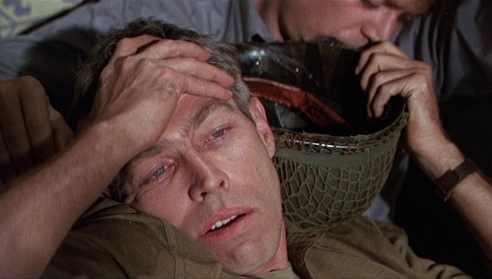
‘For my generation, raised on Sunday afternoon repeats of The Magnificent Seven and The Great Escape, Coburn was one of the great Sixties Tough Guys – part of that breed of hip macho actors like Steve McQueen and James Garner who bridged the gap between the square-jawed heroes of the Fifties (Charlton Heston, Burt Lancaster) and the neurotic anti-heroes of the Seventies, such as Al Pacino and Robert De Niro.
‘These Sixties Tough Guys were old-school without being square. They’d all served in the army or navy, but were shaped by the social liberation of the Fifties, so they smoked dope and broke the rules, whilst being grown-ups and not angst-ridden adolescents. The result was a style of acting that was intense and modern without the woe-is-me excesses of the Method. In a word, cool. As Coburn liked to say, “I’m a jazz kind of actor, not rock’n’roll.”
‘Coburn drifted into the army after school, where he played the conga drums in a service club band before deciding on a career in acting after his formidable baritone (brought on by a childhood bout of bronchitis) found him doing voiceovers for army training films. His unlikely role model was Mickey Rooney, whom he’d watched repeatedly while working as an usher at the local cinema. His biggest influence, though, was grande dame Stella Adler, under whom he studied in New York at the Stella Adler Studio of Acting.
‘He blossomed under her flamboyant approach and quoted her maxims for the rest of his life (‘Never be boring, darling!’). Thanks to his rangy physique and deep voice, he was soon working steadily on television Westerns such as Wagon Train and Bonanza. He nearly always played the heavy or the murderer – everything from eyepatch-wearing hicks to waistcoated smoothies – and tended to fare best when he could add a little panache or sarcastic topspin to his lines.
‘The apotheosis of all this fine-tuned physicality was Coburn’s big break as the knife-throwing gunman in The Magnificent Seven in 1960. The set in Mexico was a testosterone-fest of hotshot actors fidgeting with their Stetsons to upstage the star, Yul Brynner. But Coburn went the other way, making a virtue of his minimal dialogue (just 14 terse lines), and embodying a Zen-like stillness instead. He must be the first Western hero to wait for the bad guys by sitting down cross-legged and inspecting a flower.
‘By 1964, with Coburn progressing to bigger movie roles, the couple decided to buy a house to match. It was a sprawling Moroccan mansion in Beverly Hills, where the neighbours included Bill Cosby and Jack Lemmon. Beverly brought in designer Tony Duquette and turned the house into a Swinging Sixties fevered dream of turquoise walls, scarlet bannisters and zebra-skin rugs.
‘Finally, Coburn ascended to leading man stardom with Our Man Flint in 1966 and the sequel, In Like Flint, a year later. Conceived as the American answer to James Bond films, the movies were unabashed campfests, but not without wit. Master spy Derek Flint boasts a black belt in judo, cohabits with four playmates and can speak in 47 languages, including dolphin. His cigarette lighter has 82 different functions – “83 if you want to light a cigar.”
‘These were the good years for Coburn – a giddy, decade-long whirl of jet-set travel, fast driving, tailored suits, glamorous projects and epochal socialising. When Dennis Hopper threw a wrap party at their house without actually bothering to tell them first, the Coburns simply opened the doors and pressed the kids into service. When the Karmapa of Tibet and his retinue of Buddhist monks came to town, they all stayed at his house. Coburn even took His Holiness for a spin in his red Ferrari along Mulholland Drive, saffron robes trailing.
‘Coburn experimented with LSD, worked out on his back patio with Bruce Lee, and coughed up a Rolls-Royce, as you do, after losing a game of gin rummy to his wife on a plane. Beverly repaid the courtesy by acquiring a couple of pet monkeys for the household. The monkeys, called Moonbeam and Coco, had their own rope-filled enclosure, but often ran free to add to the house’s chaotic anything-goes vibe, even peeing on guests’ heads. Moonbeam, the male, liked to jump onto Coburn’s back when he and Beverly were having sex. “I was not a fan of the monkeys,” says Coburn’s son, James IV. “They got all the attention I wanted. My father just wasn’t into being Superdad. He was an actor and an artist and had his own agenda to deal with.” But Jimmy did get to go to Mexico for the making of Pat Garrett and Billy the Kid, and appears in the film’s river raft sequence. “Look, it was a great life, no question,” he says of his father’s career. “All the actors he worked with, all the films he did – nothing to complain about.
‘Peckinpah remained Coburn’s favourite director despite his addictive extremes. “I got him off alcohol and immediately he started snorting cocaine!” protested Coburn. Yet it was precisely that unhinged quality – at least when aligned with sufficient sobriety – that produced such vibrant cinema. “Sam was a mad genius,” said Coburn. “He would shove you right over into the abyss and sometime he would jump right in after you.”
‘Certainly, Peckinpah inspired what is arguably Coburn’s best performance as the world-weary outlaw-turned-sheriff in Pat Garrett and Billy the Kid. The film remains a woozy mangled masterpiece – even the restored director’s cut – but Coburn’s performance is a hard, clear and beautiful study in disenchantment and self-disgust. In the film’s most poignant scene, a wounded old sheriff (played by Slim Pickens) staggers down to the riverside to die, watched helplessly by his wife. It could so easily be maudlin (the soundtrack is Bob Dylan’s ‘Knocking on Heaven’s Door’), but the effect is heartbreaking, and properly tragic.
‘Steve Saragossi is the author of the first biography of the actor, the upcoming In Like Coburn. He feels that while Coburn never achieved the superstardom of, say, Paul Newman or Clint Eastwood, he did make the transition from classic Hollywood to the post-studio system era more successfully than most. “A lot of Sixties stars couldn’t hack it,” says Saragossi. “Your George Peppards, your Rod Taylors, your Tony Curtises. But actors like McQueen and Coburn were just as good in the postmodern anti-heroic mode as they were in the classic strait-laced heroic mould.” “If you line up Coburn’s roles post-Flint,” says Saragossi, “he played more anti-heroes than anyone you can think of: conman, blackmailer, huckster, outlaw, pickpocket, criminal mastermind, IRA terrorist… He ploughed that trough with abandon, more than Clint Eastwood even.”
‘Watching the Coburn canon again, it’s easy to see why. His expansive lust-for-life charm, seasoned with a little mocking disdain, was perfectly suited to the rogues and scoundrels that flourished in the Nixon era. That vast equine grin was equal to any criminal setback, it seemed. Sergio Leone’s 1971 movie, Duck, You Sucker, is probably the pick of Coburn’s non-Peckinpah films, a billowy meditation on revolution and friendship drenched in dreamy torrents of Ennio Morricone. It contains another favourite Coburn moment – when he watches a firing squad from the shadows, rain dripping off his fedora, and the echoed gunshots send him back into his own tragic past. It’s sublime screen acting – no dialogue, all close-up – the great-souled hero letting us in.’ — Sean Macaulay
___
Stills
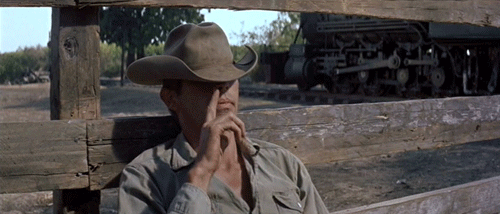


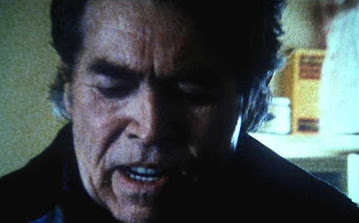












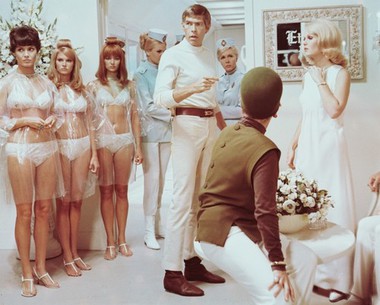




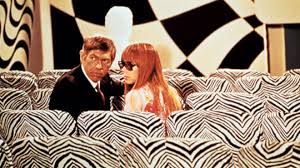


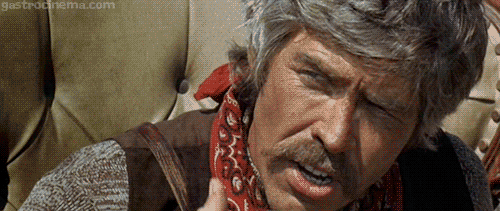





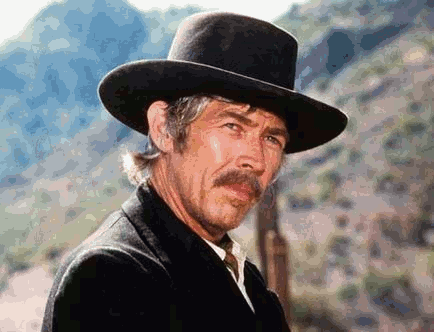

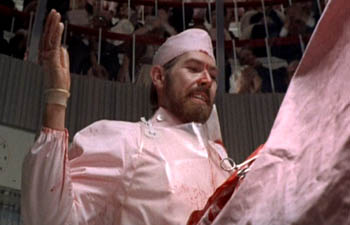
















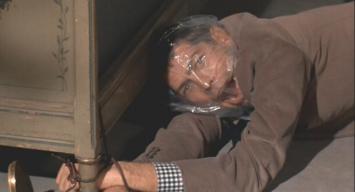
















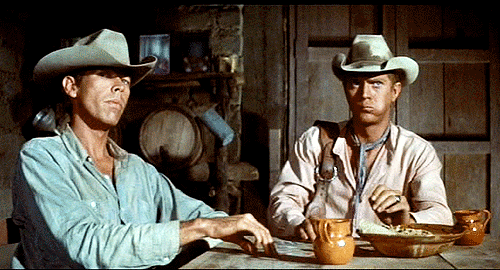


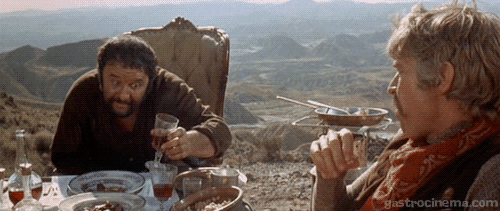


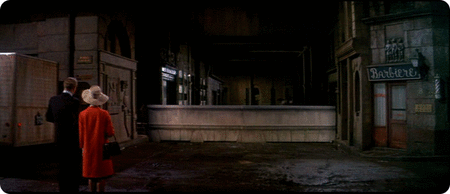

___
Further
James Coburn Official Website
James Coburn Official Memorial Fan Club
James Coburn @ IMDb
‘TRIBUTE TO JAMES COBURN’
‘GET TO KNOW JAMES COBURN, THE ULTIMATE SIXTIES TOUGH GUY’
‘Great Conversations: James Coburn’
James Coburn interviewed by Roger Ebert
Quintessential Cool’
‘Was James Coburn “Cured” of Rheumatoid Arthritis?’
‘Top 25 des meilleurs films avec James Coburn’
‘At Home with James Coburn’ @ Architectural Digest
NICK NOLTE AND JAMES COBURN IN CONVERSATION @ Interview
‘Kung Fu Monthly Presents Bruce Lee Tribute By James Coburn, 7″ vinyl, £20.00
James Coburn on Saturday Night Live
____
Extras
James Coburn and Sam Peckinpah on Modern Films, Violence
Bruce Lee and James Coburn Chi Sau
Muppet Show – James Coburn and Animal
James Coburn 1977 Schlitz Light Beer Commercial Lite
Joe Mantell plays the drums for his brother James Coburn…
Tombe de James Coburn au Westwood Memorial Park de Los Angeles
____
Interview
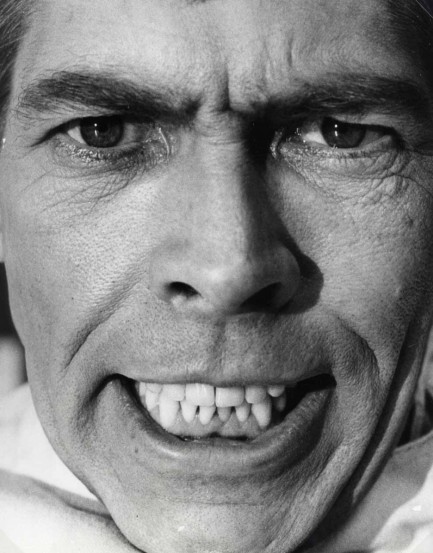
Your character Pop Whitehouse is one of the most loathsome villains to grace a movie screen in recent memory. Did you have trouble shaking him off once the picture wrapped?
JAMES COBURN: Not really, because I got it all out. It’s really when you can’t get it out or when you’re doing it on stage and you have to do it over and over again that it can be troubling. But I learned long ago how to get rid of it by doing it! (laughs) You get it out…villains are really fun to play because they’re usually meatier characters, because they’ve made decisions that haven’t all been very good ones, (laughs) and are paying the price, with a little karma attached. They have something to say, I think. I never play them as a “bad guy.” I play them like I have something to accomplish. In Affliction, it was “I have to get my boys to be men! If they’re not strong men, by God, I’ll beat the shit out of them!” That’s what makes him seem so savage…it’s that conflict. Scripts without conflict are really boring. Characters without conflict are really boring to play, because you’re always trying to catch up with something. And this one was just loaded with conflict. Paul (Schrader) said to Nick and I in the beginning “I’m just gonna let you two guys go after each other!” And we did. We went for it. It was great fun. I’d like to do it all over again.
Is it difficult to go to such a dark place as an actor?
It’s sometimes difficult to find, initially. But as actors, we don’t have to be who we’re playing. That’s one of the good things about being an actor. But, if you let yourself get locked into that, where that character becomes your essence, that’s scary. There was an old film called A Double Life (1947), starring Ronald Coleman, where he became so infected with Othello, that he actually performed it for real, with his own Desdemona. Stella Adler, who I studied with, said “Actors act. They don’t have to be their roles.” On Affliction, we were all joking around between takes, then when we went back to it, boom! We were right back into it again, because it was written so well. It was very straight-on. There was no ambiguity about the characters, and it’s really fun and enriching when that happens. As actors that’s what we try to do, enrich our own beings by absorbing impressions, then generating it out through our craft and giving it to the audience. Truth is obvious, it’s always obvious, isn’t it? Screenplays sometimes hide the truth, which isn’t necessary. You have to give audiences some credit. You don’t have to play around the truth. And what Pop Whitehouse was saying, even though you might hate him for it, was the truth! He knew exactly who he was. He was, nevertheless, afflicted, but he was also very honest.
What was it like studying with Stella Adler?
Great. I actually studied with Jeff Corey out here first. His philosophy was more improvisational. Get away from your ego, get away from lines, things like that. Learn how to play the action of the scene, that’s what improv is really about. Stella, on the other hand, was into style. The style of Shakespeare, modern styles…she’d show you how to do it. You’d see her transform into a raving hag and then into a little girl. Drop of a hat, bang. That’s what I mean about acting. You don’t have to live it. As long as the character doesn’t inhabit you, that’s the kick of acting. De Niro studied with Stella. She was furious with him for putting all that weight for Raging Bull. (laughs)(imitating Stella) “What are you doing to yourself?! You’ll ruin your health!” (laughs). She was very demanding, very hard on women especially. She would just strip you down, peel your ego right off your skin.
Tell us about Sam Peckinpah.
Sam Peckinpah was a genius for four hours a day. The rest of that time he was drunk. He called himself “a working alcoholic,” but he was much more than that. I think the alcohol sort of quelled all the influences that were going on around him so he could really focus on what he was doing with the film. He would shoot with three cameras and just…do it. You never talked with Sam about things like motivation. I asked him one time, when we were doing Major Dundee. I said “Sam, what is it that makes my character tick?” And he thought about it for a minute and finally said “Drier. Dry. He doesn’t give a shit.” And that’s who that character was! And that’s how I played him…It was really sad what happened to that picture. The studio took it away from him and re-cut it. We had a great knife fight in that picture, between Mario Adorf and myself. And it was a viscous fucking knife fight. While we were shooting it, people were yelling for us to stop! That’s how real it looked. It was a terrific piece of action, and it was cut from the film…the night it premiered at the Paramount theater, Sam saw the studio’s cut and was just devastated. His hands were shaking. He had half a pint of whiskey and dropped it. It smashed on the floor. And my wife at the time said “Sam, it’s okay, it’s only a movie.”
When you look at Major Dundee, it’s sort of like looking at the U.S. cut of Pat Garrett, which was also severely compromised by the studio. You can see there’s a masterpiece in there somewhere.
I agree, but what they call the “director’s cut” of Pat Garrett is actually just the television cut. Sam had the only true cut that he made, and that’s up in his archives in Sonoma. When he finished cutting Pat Garrett, it was taken away from him. This was Jim Aubrey at MGM and he was more interested in getting his hotel ready than he was in film. I think he really despised anybody who displayed artistry. He really like digging into them. When we started shooting Pat Garrett, I just finished shooting a film with Blake Edwards called The Carey Treatment (1973) that Aubrey also took away and re-cut. And I said to Sam “This guy’s crazy! He could do this film all sorts of harm.” Sam said “Don’t worry about a thing, Jim. I just bought one share of stock in MGM, and if they mess with me, goddammit, I’ll sue their asses!” (laughs) “One share of stock, Sam?! What’s that gonna do ?!” “You’ll see.” (laughs)
I heard a story that Peckinpah got drunk during the shoot and didn’t want to kill Billy. True?
Yeah, but he wasn’t that drunk. We were sitting in his trailer and he said “Goddammit! Why do we have to kill him?” “Well Sam, that’s the way it happened.” “Well, why can’t we make it un-happen?” “Sam we can’t do it.” (beat) “Why…not?!” (laughs) I think he saw a lot of himself in the character of Billy…We found out halfway through the shoot that most of the masters we had shot were out of focus. We were using five or six cameras at once and we didn’t have a camera mechanic because MGM wouldn’t pay for one! So we used different lenses, different set-ups, and still, it’s all out of focus. Finally the camera mechanic is sent out. It turns out the flange in the camera was off by one one thousandth of an inch, or some damn thing. So we tell Aubrey that we have to re-shoot all these masters. He says “You’re not gonna re-shoot anything. The audience isn’t gonna know the fuckin’ difference!” Can you imagine?! It was just mind-blowing! So what we did was, we stole all those shots when the brass didn’t know we were shooting and got it all! So now this really pissed them off, because now we had some real film on our hands! (laughs) So Sam had his cut previewed, and at the same time, Aubrey had his guys cutting their film. So all the editors got together and gave Sam a cut of his film, but without a soundtrack. He didn’t get that back until he cut it for television. But there’s only about five minutes missing from that cut he originally made.
Tell us about the genesis of The President’s Analyst.
Ted Flicker and I met while we were shooting Charade in Paris. He’d come over to meet with his friend Peter Stone, who’d written the picture. So Ted was sitting in the background with his big black shades, watching us shoot. So Peter introduced us…George Peppard and Elizabeth Ashley were having a Christmas party a few years later. Ted was there. He said “I’ve just finished a script called The President’s Analyst.” I said “That’s an intriguing title. Do you have a deal on it?” He said “No.” So I took it home, read it, and wanted to do it. Ted said he wanted to direct it, so I said “Let me talk to Paramount.” I had just done Waterhole No. 3 (1967) over there. Robert Evans had just taken over, he loved it. Peter Bart read it, loved it. They said “Can he direct?” I said “I dunno, let’s find out.” So they put the whole deal together in five days! It was Evans’ first film at Paramount. There are some great scenes in there. It was named one of the finest political films of the decade by the Sunday Times in London…Ted Flicker never did another movie. He moved out to New Mexico, did one hit TV show, the name of which escapes me, and sculpts, paints. Just finished a script about the Civil War.
I know you were also very close to Bruce Lee. Tell us about Bruce.
Bruce was a true martial artist, created himself, from a little roustabout guy running around the streets of Hong Kong, into this magnificent fighting machine. He truly was an artist. His art had no defensive movements. It was all attack. He was so fast, you couldn’t touch him. He was so fast, he had to slow down for the camera, because it couldn’t catch him! It would look like he hadn’t done anything. (laughs) We wrote a script together called The Silent Flute, with Sterling Silliphant. We all went to India. Everytime we went someplace, Bruce had this pad that he’d hold in one hand and punch with the other! It drove me nuts! (laughs) I said “Bruce, will you cut it out, man?! You’re shaking the whole airplane!” He said “But it make my knuckles hard!” “I know, but it’s pissing me off!” (laughs) Everything he did was related to his art. But he had a great sense of humor, or he did until he went to Hong Kong. He came back from Hong Kong one time, and he was always very outspoken about martial arts. “This martial arts in Hong Kong is bullshit,” he said, because there was no bodily contact. “Judo good. Ju-jitsu good. Aikido, best. But this other stuff, no good.” So we’d go to these tournaments and he’d spout off…he was back in Hong Kong, and was invited to this tournament that was televised, as an observer. He was famous, and controversial, as being an outspoken martial artists. So they were breaking boards and ice with their heads…Bruce said “That’s not martial arts.” So they said “Why don’t you show us your idea of martial arts…” So they taped up three thick pine boards. So he held it out and side kicked it, and everything went flying into the air, knocked one of the lightbulbs out way up. Sparks came flying down…it was one of those great, dynamic moments! And the next day, the papers were filled with this! From that, both Run Run Shaw and Raymond Chow, who were big film producers there, made him offers to do films there. So he came back and we were having dim sum at the Golden Door down in Chinatown, and he’s telling me all this. He said “They want me to do this TV series at Warner Brothers called Kung-Fu. But I’m also getting these offers in Hong Kong. What should I do?” So I thought about it for a minute, because he really wasn’t a good actor. But he had great dynamic presence and had this macho attitude that he could play really well…but that would be very tiresome watching for an hour on television. Plus he spoke with a very heavy Chinese accent. So I said “Go back to Hong Kong and make southeast Asian movies. You’ll be huge star.” “But I want to work here.” I said “You want to be a movie star, right? It’s what you’ve always wanted.” He thought for a minute and said “I want to make more money than Steve McQueen.” (laughs) So he went to southeast Asia, David Carradine did Kung-Fu in slow motion, Bruce became a huge movie star and made more money than Steve McQueen. Strange story…Anyway, then I get a call one morning from Sterling Silliphant saying “Bruce is dead.” I didn’t believe him, but I learned that a couple months before he’d come home and passed out in between really these really intense workouts that he was doing. And this girl that he was with couldn’t wake him up. He went to all of these doctors who told him “Your body’s perfect, you’re just over-worked.” He went back and within six weeks he was dead of an edema of the brain. And that was that…
What do you think of the state of most Hollywood films today?
I’m from the Billy Wilder school. Somebody asked him “Do you ever go to movies?” He said “No.” They said “Why not?” Wilder said (German accent)”Build da set, blow it up! Boom!” (laughs) Finally, they’ve gotten rid of the actors.
__________________
20 of James Coburn’s 70 roles
_______________
John Sturges The Magnificent Seven (1960)
‘There’s a famous scene in The Magnificent Seven in which the James Coburn character, Britt, proves his claim that in a showdown in which his opponent is armed with a pistol and he is armed with a knife, he can kill his opponent by throwing his knife into him faster than his opponent can draw and fire his gun. On the special features track of the DVD, Coburn says that he received knife throwing lessons from a stuntman, Richard Farnsworth, who went on to have a successful acting career of his own. Coburn regularly practiced his throw in his bedroom, making his wife nervous. But how plausible is this scene? Plausible enough for a Hollywood movie, in which through the magic of editing the knife has barely left Coburn’s hand when it is shown sticking out of the gunman’s chest.’ — Bowie Knife Fights, Fighters, and Fighting Techniques
Excerpt
Is the skill of James Coburn of “The Magnificent Seven” possible??
_______________
John Sturges The Great Escape (1963)
‘In July, Sturges showed the rushes of the first six weeks shooting, and McQueen decided his part was minor and undeveloped. He was particularly upset that his character virtually disappears from the film for about 30 minutes in the middle so he walked out demanding rewrites. Sturges admitted the half-hour gap was likely a problem, but with the production already behind schedule due to the heavy rain, he felt he couldn’t take time out to do rewrites and rescheduling. Co-star James Garner said he and cast member James Coburn got together with McQueen to determine what his specific gripes were. Garner later said it was apparent McQueen wanted to be the hero but didn’t want to be seen doing anything overtly heroic that contradicted his character’s cool detachment and sardonic demeanour. At the same time, McQueen never really liked his character’s calm acquiescence to his time in the cooler or the famous bit with the catcher’s mitt and ball. Sturges considered writing the character out of the story altogether, but United Artists informed him they considered McQueen indispensable to the picture’s success and would spring for the extra money to hire another writer, Ivan Moffit, to deal with the star’s demands. McQueen returned to work.’ — The Great Escape Locations
Trailer
Excerpt
________________
Stanley Donen Charade (1963)
‘This film is often called the “best Hitchcock movie Hitchcock didn’t make” because although the film feels like Hitchcock, it was actually directed by Stanley Donen. But Charade is Hitchcockian on purpose. Donen meant it as an homage and near-spoof of Hitchcock’s films, especially those with Cary Grant. As Donen later said, “I always wanted to make a movie like one of my favorites, North by Northwest [1959]. What I admired most was the wonderful story of the mistaken identity of the leading man. They mistook him for somebody who didn’t exist; he could never prove he wasn’t somebody who wasn’t alive. I searched [for something with] the same idiom of adventure, suspense and humor.”’ — The Blonde at the Film
Excerpt
Excerpt
________________
Arthur Hiller The Americanization of Emily (1964)
‘The lively but somehow slightly distasteful The Americanization of Emily stars James Garner as a WWII naval officer who happens to be a craven coward. While his comrades sail off to their deaths, Garner makes himself scarce, generally hiding out in the London flat of his lothario navy buddy James Coburn. Garner falls in love with virtuous war widow Julie Andrews (the “Emily” of the title), but she can’t abide his yellow streak. Meanwhile, crack-brained admiral Melvyn Douglas decides that he needs a hero–the first man to die on Omaha Beach during the D-Day Invasion. Coburn is at first elected for this sacrifice, but it is the quivering Garner who ends up hitting the beach. He survives to become a hero in spite of himself, winning Andrews in the process. Paddy Chayefsky’s script, based on the novel by William Bradford Huie, attempts to extract humor out of the horrors of war by using broad, vulgar comedy instead of the light satirical touch that would seem to be called for. Americanization of Emily was Julie Andrews’ second film; it should have led to a steady stream of adult-oriented roles, but the box-office clout of Mary Poppins and The Sound of Music consigned her to “wholesome family entertainment”.’ — Hal Erickson, Rovi
Trailer
James Coburn on “The Americanization of Emily”
_______________
Tony Richardson The Loved One (1965)
‘Since the merchandisers of The Loved One are boastfully proclaiming it to be an outrageous motion picture with something to offend everyone, I see no reason to deny their exultation. It IS an offensive film—but for reasons other than the boldness and indelicacy of its theme or, indeed, for the many insensitive and impious things it shows. As a screen version of the famous novel of the same name by Evelyn Waugh that was one of the first blistering satires on the so-called American way of death, this latest piece of social comment from Tony Richardson, which came to the Cinema I yesterday, is inevitably startling and tough. Its candid and glittering expositions of the fantastic funeral rituals that are practiced in some of the gaudy graveyards in the vicinity of Hollywood are naturally shocking and disturbing when so vividly and vulgarly revealed and when shown with such wry appreciation of their commercial sham as Mr. Richardson shows them here.’ — Bosley Crowther, NYT
Trailer
The Loved One/ Making Of …Featurette
______________
Daniel Mann Our Man Flint (1966)
‘Our Man Flint (1966) presents the fantasy world of Bond as seen through the willfully silly prism of the 60s pop movement. It absolutely wallows in its campy aesthetic, giving us 007 by way of Adam West’s Batman. As the film begins, we learn via some grubby stock footage and model work that something is wreaking havoc with the weather. A group of mad scientists are holding the world hostage, threatening to melt the ice caps and destroy Life As We Know It. They also turn women into sex slaves. Why not. The Zonal Organization for World Intelligence and Espionage (Z.O.W.I.E., natch) fires up its UNIVAC supercomputer to find a solution, and the computer spits out the name of the one man who can stop the evil plot: Derek Flint. Flint’s former boss, Lloyd C. Cramden (Lee J Cobb) is reluctant to bring him in; it seems Flint is an unconventional loose cannon who plays by his own rules! Flint, a rich swinger with a private jet and four live-in girlfriends or sister wives or something, could give shit about the world being threatened, and turns down the job a number of times, plenty busy with his karate and fencing and screwing. But when someone tries to kill him with a poison dart while he’s out dancing with his four ladies, it’s on. Flint chases down leads around the globe with a preternatural intuition that would make Sherlock Holmes envious. Conferring with British agent 0008 (a ringer for Sean Connery), he learns the identity of the secret terrorist organization behind the plot and sets out to stop them from using their weather-controlling device against the governments of the world. Lives are saved, women are objectified, there’s a weird stand-off between the scientists and Flint, where he rejects their idea of a scientifically-engineered Utopia because FREE WILL, and credits are rolled.’ — Birth. Movies. Death.
Trailer
Excerpt
Excerpt
______________
Blake Edwards What Did You Do in the War, Daddy? (1966)
‘What Did You Do in the War, Daddy? is one of the mildly satirical, mostly slapstick WWII comedies that came out in the spate of ‘60s war dramas. A lot of movies were about special teams with difficult assignments, and many of these adopted at least a partly insubordinate tone about ragtag misfits, such as Steve McQueen’s character The Great Escape or the cast of The Dirty Dozen. The ideas are that regular officers are incompetent and war is hell, but rugged individuals can have a grand time. No movies were mentioning Vietnam yet (The Green Berets was 1968), but the shadow of its restless, unspoken presence looms dimly. Edwards had pioneered the modern WWII comedy with Operation Petticoat, a success beyond all reason, and here he applies himself to the Allies’ 1943 invasion of Sicily, depicted with sweeping footage of legions of soldiers assaulting the coast of California. Captain Lionel Cash (Dick Shawn), a spit-and-polish by-the-booker with no combat experience, is assigned to lead a weary platoon in capturing a strategic village. The jolly Italian army captain (Sergio Fantoni) is happy to surrender, but first the town must have its festival—a lengthy, loud, frantic setpiece anticipating The Party. One complication and crossed purpose leads to another, and soon the soldiers are staging a fake battle for a newsreel camera, as directed by loosey-goosey Lt. Christian (James Coburn), and then the German army shows up to take everyone prisoner while one Major Pott (Harry Morgan) wanders the underground catacombs losing his mind. There’s also much sexy business with the mayor’s daughter (Giovanna Ralli) and roles for Aldo Ray, Carroll O’Connor, Leon Askin, and Vito Scotti.’ — Pop Matters
Excerpt
______________
Bernard Girard Dead Heat on a Merry-Go-Round (1966)
‘Aside from a poetically justifiable title, Dead Heat on a Merry-Go-Round, which turned up yesterday at the Victoria and Festival Theatres, has the refreshing temerity to thumb its nose figuratively at laws and gaily get away with it. James Coburn, who successfully entered the James Bond school of daredeviltry in Our Man Flint, has another vehicle to fit his newly found, profitable talents. Bernard Girard, the writer-director, and Carter DeHaven, the producer, making their film debuts have come up with a convoluted yarn that eventually unravels quite easily. Mr. Coburn is a lovable, craggy-faced, toothy schemer whose machinations carry conviction despite an unlikely story. Camilla Sparv, as the lissome blonde he marries; Marian Moses, as the psychiatrist; Nina Wayne, as a curvacious, dumb maid, and Rose Marie, as a widow he bilks, give him natural assistance. Aldo Ray, Michael Strong and Severn Darden, as his helpmates, and Robert Webber, as a government security aide, lend helping hands along the way.’ — NYT
Trailer
______________
Gordon Douglas In Like Flint (1967)
‘There’s really been only one rival to James Bond: Derek Flint. That’s because of James Coburn’s special brand of American cool. He’s so cool, in fact, that he doesn’t care to save the world. That is, until he’s personally threatened. He’s a true libertarian, with more gadgets and girls than Bond, but with none of his stress or responsibility. There was bound to be a Flint sequel, and In Like Flint (1967) delivers the same kind of zany fun as its predecessor. Flint is recruited once again by Lee J. Cobb to be the government’s top secret agent, this time to solve a mishap involving the President. Turns out, the Chief Executive has been replaced by an evil duplicate. The new plan for world domination involves feminine aggression, and Flint, with his overpowering charisma, is just the man to turn the hostile forces around. In Like Flint is still over the top, but some of the novelty has worn off, and it doesn’t have quite the same edge as the original. Even Jerry Goldsmith’s score is a bit more subdued. But the film still has James Coburn and that funny phone.’ — Bill Desowitz
Trailer
Excerpt
James Coburn interview for IN LIKE FLINT
________________
Ted Flicker The President’s Analyst (1967)
‘Every month the little TeleBriefs magazine comes with your phone bill. It is the most relentlessly bright, cute and friendly publication in the world. It is the Doris Day of the printed word. It is filled with stories of heroic telephone operators hauling dogs out of the river. It is overdone. One of the world’s largest corporations trying to be folksy is like Godzilla giving Lassie a Milk Bone. The President’s Analyst fights back against the phone company and its accomplice, J. Edgar Hoover and his Electric G-Men. It is one of the funniest movies of the year, ranking with The Graduate and Bedazzled in the sharp edge of its satire. James Coburn stars as an analyst who is called in to give the President someone to talk to. This makes problems. The President is the loneliest man in the world. But the President’s analyst is lonelier, especially since the FBI bugs his room and the CIA hires his girlfriend. Writer and director Theodore Flicker’s satire is modern and biting, and there are many fine, subtle touches in the film. All of the FBI agents are clean-cut, sharp-jawed, impeccably groomed men of exactly 4 feet, 11 inches tall. And when Coburn is kidnapped by the phone company, there is a nauseatingly pleasant young man who lectures him on why the phone company is his friend. To accompany the lecture, there are animated cartoons like a TV commercial — but done in a peculiar way so all the little dancing men look uncoordinated.’ — Roger Ebert
Trailer
Excerpt
Excerpt
Excerpt
______________
Christian Marquand Candy (1968)
‘A spoof of Voltaire’s Candide, Candy manages to make almost each and every one of these people look like an idiot. Watch all of this film and you’ll wonder how any of them managed to move on with their careers after such a horrific experience. The loosely constructed story follows the erotic journey of naïve schoolgirl Candy (Aulin). Basically she goes from location to location as she seeks for truth and meaning in life. The only real result is that a bunch of strange and sleazy guys boff her. I suppose that I could elaborate more about the different characters Candy encounters, but what’s the point? They’re all wild parodies of different sorts. Actually, in the early parts of the film, it’s mad broadness almost seems fun. Our first main guest star is Richard Burton as heartthrob poet McPhisto. He offers such a self-mocking and over the top performance that the movie briefly – and I do mean briefly – looks like it might be something interesting. After that, unfortunately, Candy crashes. Essentially the plot follows Candy from sexual partner to sexual partner, and next she gets it on with her family’s Mexican gardener Emmanuel, played by Ringo Starr, the least Mexican man on the planet. I suppose this casting is supposed to be some sort of sly comment on something, but the ultimate result is nothing more than one of the worst performances committed to film. As a Beatle fan of many years, it pained me to see Ringo offer this insanely lame piece of work. Well, at least he got to grope Aulin. Once Ringo leaves the film, we move from one nutty character to another, all with the same results: sex and alleged merriment. Possibly the nadir accompanied Walter Matthau’s bug-eyed General Smight. In addition to the bad pun and weak performance by Matthau, this segment provides some of the movie’s more heavy-handed “commentary”. The usual “army equals bad” mentality of the era comes into play as we learn that Smight controls a squad that lives in a plane that never lands; they constantly fly so they can be ready for action. That’s supposed to be wicked satire? It felt like little more than warmed-over Strangelove.’ — Colin Jacobson
the entire film
_______________
Sergio Leone Duck, You Sucker (1971)
‘Up to 1971, Sergio Leone’s films suggested meaning through their operatic tone and lack of dialogue; silence, however long held during a standoff, adds implied depth without words. Zapata or “Spaghetti” Westerns can contain social commentaries (often on America’s capitalist obsession with money and the robbery thereof), but are primarily tooled for stylistic capacity. Often, political events are used as plot devices—for example, one feels the Civil War interlude in Leone’s The Good, the Bad, and the Ugly may be out of place and that the brief political statements in these few scenes do not vastly affect the rest of the picture. Not so with Leone’s last great Western, Duck, You Sucker (Giù la testa) formerly known as A Fistful of Dynamite, and what in Leone’s hopes would have been called Once Upon a Time … the Revolution. Opening titles show a quote from Marxist political leader Mao Tse-tung that reads: “The revolution is not a social dinner, a literary event, a drawing board or an embroidery; it can not be done with elegance and courtesy. The revolution is an act of violence…” With this warning launches Leone’s most established, yet least personal film. After artistic and financial successes from his hugely popular ‘The Man with No Name’ Trilogy, Leone’s Duck, You Sucker humanizes his protagonists, otherwise skewed by Zapata temperament. It is also his most clearly political film. In a meandering plot, much like The Good, the Bad and the Ugly’s, Leone introduces antiheroes galore. Rather than Tuco (Ugly) and Blondie (Good), we get Rod Steiger’s thieving Mexican Juan Miranda and his reluctant partner John Mallory—an ex-Irish revolutionary and explosives expert played by James Coburn. Together, in Leone’s grandiose, episodic Western style, the two seek to rob an idyllic bank in Mesa Verde. Like a diptych, another panel opens when their robbery plans go awry and thrust them deep into the Mexican Revolution of 1913, where Miranda’s false heroism brings him celebrity and Mallory’s explosives provide ample bang.’ — Deep Focus Review
Excerpt
Excerpt
________________
Sam Peckinpah Pat Garrett & Billy the Kid (1973)
‘Sam Peckinpah’s Pat Garrett and Billy the Kid is a towering, unfinished masterpiece and one of the saddest movies I have ever seen. A compromised work about how compromise eats the soul, it has a boozy, slouchy grandeur that troubles your dreams for weeks after the closing credits roll. This is Peckinpah’s final word on a genre he helped to define, and what a hopeless, despairing word that is. It’s the greatest movie you almost never got a chance to see. On paper, Pat Garrett and Billy the Kid looked like a slam-dunk proposition. The director of The Wild Bunch headed back out west for this oft-filmed tale of two old friends finding themselves on opposite sides of the law when capitalist robber-barons and government stooges started putting fences up all around the high country. Working from an acerbic script by cult novelist Rudy Wurlitzer, this bitterly revisionist take starred James Coburn as outlaw-turned-Sheriff Pat Garrett, assisted here by a posse of veteran old-timey Western character actors such as Jack Elam, Katy Jurado, Chill Wills and Slim Pickens. For maximum counter-culture kick, Billy the Kid was played by hunky, hugely popular singer-songwriter Kris Kristofferson, with his gang of rebels filled out by Kristofferson’s touring band, Kris’ wife Rita Coolidge, plus other early 1970s music scene denizens including Harry Dean Stanton and some twitchy little cat named Bob Dylan. (Obsessed with Billy the Kid, Dylan reportedly begged Wurlitzer to write him a small role in the movie and composed the film’s haunting, dirge-like score.) What could possibly go wrong?’ — The Artery
Trailer
Excerpt
________________
Walter Hill Hard Times (1975)
‘Hill and his co-writers pack a lot of memorable scenes into the film’s scant 93 minute running time. Aided by editor Roger Spottiswood (another future director) and cinematographer Philip Lathrop, Hill makes every frame of the film count. There isn’t a slow moment or a meaningless line of dialogue. Clearly the highlights are the action sequences. This is Fight Club for the Baby Boomer generation. Bronson, who was in his 50s at the time, performs all of his own gut-wrenching fight scenes, along with co-stars Robert Tessier and Nick Dimitri. They are brutal affairs that will quickly convince you that these men are actually beating each other up. The stunt coordination is among the best I’ve seen in any film. The film’s more whimsical sequences are aided immeasurably by Barry DeVorzon’s addictive score. With Hard Times, Bronson reached the pinnacle of his acting career. It’s wonderful to see him reunited with Coburn, his co-star from The Magnificent Seven and The Great Escape. However, Coburn became even more interesting as an actor as he grew older whereas Bronson grabbed for the low-hanging fruit and began to concentrate primarily on by-the-numbers action movies. The film remains a testament to his abilities as an actor- and credit Walter Hill for bringing those out in full force.’ — Cine Mareto
Excerpt
_______________
Sam Peckinpah Cross of Iron (1977)
‘Peckinpah wasn’t exactly the go-to guy for fluffy comfort viewing, and the war scenes are as searing and brutal as you’d expect – despite the production’s limited budget. While it is brilliantly filmed, though, Cross of Iron’s big battle sequence drags on for so long that it feels as if Peckinpah is trying to match minute for minute the pace of the actual German retreat. As the troops fall back, Stransky makes sure Steiner’s platoon don’t get their orders, abandoning them in territory that the Soviets have just recaptured.’ — The Guardian
Trailer
Excerpt
_____________
Michael Crichton Looker (1981)
‘Looker is a 1981 science fiction film written and directed by Michael Crichton. It starred Albert Finney, Susan Dey, and James Coburn. Former NFL linebacker Tim Rossovich was featured as the villain’s main henchman. The film is a suspense/science fiction piece that comments upon and satirizes media, advertising, TV’s effects on the populace, and a ridiculous standard of beauty. Though spare in visual effects, the film is notable for being the first commercial film to attempt to make a realistic computer-generated character, for the model named Cindy. It was also the first film to create three-dimensional (3D) shading with a computer, months before the release of the better-known Tron.’ — collaged
Trailer
______________
Richard Donner Maverick (1994)
‘Maverick is a 1994 American Western comedy film directed by Richard Donner and written by William Goldman, based on the 1950s television series of the same name created by Roy Huggins. The film stars Mel Gibson as Bret Maverick, a card player and con artist collecting money to enter a high-stakes poker game. He is joined in his adventure by Annabelle Bransford (Jodie Foster), another con artist, and lawman Marshall Zane Cooper (James Garner). The supporting cast features Graham Greene, James Coburn, Alfred Molina and a large number of cameo appearances by Western film actors, country music stars and other actors. The film received a favorable critical reception for its light-hearted charm, and was financially successful, earning over $180 million during its theatrical run. Costume designer April Ferry was nominated for the Academy Award for Best Costume Design.’ — collaged
Trailer
______________
Tom Shadyac The Nutty Professor (1996)
‘For those who have not seen The Nutty Professor, the film is a remake of the 1963’s film of the same name directed by Jerry Lewis and is also an adaptation of the novel Strange Case of Dr Jekyll and Mr Hyde by Robert Louis Stevenson. The Nutty Professor, which was released in 1996, was written by David Sheffield, Barry W. Blaustein, Tom Shadyac, and Steve Oedekerk. Tom Shadyac also directed the film. Eddie Murphy, Jada Pinkett Smith, James Coburn, Larry Miller, Dave Chappelle, and John Ales star in the film. In The Nutty Professor, Sherman Klump (Eddie Murphy), an obese college professor, takes an experimental weight loss drug to win over a young woman.’ — collaged
Excerpt
Excerpt
_______________
Paul Schrader Affliction (1997)
‘Nolte and Coburn are magnificent in this film, which is like an expiation or amends for abusive men. It is revealing to watch them in their scenes together–to see how they’re able to use physical presence to sketch the history of a relationship. Schrader says he cast Coburn because he needed an actor who was big enough, and had a “great iconic weight,” to convincingly dominate Nolte. He found one. Coburn has spent a career largely in shallow entertainments, and here he rises to the occasion with a performance of power. There is a story about that. “I met with Coburn before the picture began,” Schrader told me, “and told him how carefully Nolte prepares for a role. I told Coburn that if he walked through the movie, Nolte might let him get away with it for a day, but on the second day all hell would break lose. Coburn said, ‘Oh, you mean you want me to really act? I can do that. I haven’t often been asked to, but I can.’ He can.’ — Roger Ebert
Excerpt
Excerpt
James Coburn Wins Supporting Actor: 1999 Oscars
_______________
Alan Jacobs American Gun (2002)
‘It’s a shame about American Gun, really. Though it features a fantastic lead performance from James Coburn (in his final film role) and a genuinely involving mystery, the film completely falls apart in the last 15 minutes thanks to an incredibly silly plot twist. Writer/director Alan Jacobs clearly has issues with guns and gun control, and eventually turns his film into an issue-oriented think piece. Right up until that fatal last reel, American Gun is a mostly engaging and intriguing character study of an expectedly determined man. Anchored by a particularly strong performance from Coburn, the deliberate pace of the movie effectively establishes Tillman as someone’s whose motives we can understand. Though Jacobs’ style occasionally resembles that of a TV movie (ie a montage of Tillman and his wife doing various things after their daughter dies) and he’s certainly guilty of overusing flashbacks, he effectively takes his time in laying the entire story out. The slow build allows us to sympathize with Tillman to the extent where we genuinely care about him.’ — Reel Film
Trailer
*
p.s. Hey. ** Thomas Moronic, Hey Thomas, old pal. I’m obviously very happy you’re a fellow lover of Darius’s book. And awesome that the Bret podcast had the all-time best effect that anything could have. Happy writing! I’d love to hear more, man. ** David Ehrenstein, Hi. I certainly know about the ugly, depressing Jussie Smollet situation, although I don’t know how covered it is in the French media. And Trow loved ‘Negrophobia’, which is, yes, pretty hot. ** James, Hi, man. You def. won’t regret reading ‘Negrophobia’. Yes, major suckage about our heating. Our apartment’s owner is no saint. She’s doing everything she can to avoid paying for a new heating unit while we sit here freezing and begging. The soonest we’ll get relief is early next week. In the meantime, it’s 24/7 brr. Cool, when it’s time, let me know, and I’ll pass along my real world mailing addy. Having an agent makes things infinitely easier if the often huge hassle of getting one isn’t a huge hassle. I don’t have a ‘4 books’ post in-process yet, but I will soon. The BEE podcast is up and listenable as of yesterday. Thanks, buddy, and love back. ** Sypha, Cool re: the timing. Your writing question: For me, the emotional engagement doesn’t kick in usually until I start the actual writing. I find that my writing naturally goes for what’s emotionally engaging, and I just guide/follow its needs. So, yeah, I would say just start the thing, and I would imagine you’ll get pulled towards the aspect of the project for which you have feels naturally. Does it not work that way for you normally? Me too: I just joined Patreon for the first time so I could hear myself. ** Bill, It’s a pretty must read. My NyQuil was confiscated because the bottle was just slightly over the size restriction thing, the bastards. No, there’s nothing like it here. NyQuil has too much of something that France forbids. And yet this is a country where you can buy codeine-laced paracetamol over the counter. Heads up if any video or sound evidence of your gig pops up please. ** Brendan, Hi, B. No, as I just told Bill, there’s something in NyQuil’s ingredients that doesn’t fly here legally. Not sure what, but there’s no equivalent, and NyQuil is kind of a ‘miracle drug’ for me when I have a cold, even if the miracle is psychological, which it probably is. No, I don’t believe I know Naomi Punk at all. Huh. Okay, I trust you like the back of my hand — that makes no sense, but … — so I’ll go fill up on their stuff right away. Thanks a lot! Love, me. ** _Black_Acrylic, ‘Negrophobia’ should be on everyone’s shelf, especially the shelf of a stylish brainiac like you. Thanks a bunch about the podcast. Christ, it’s lengthy though. ** Nik, Hey, N. New York Review Books republished it. Francis Ponge is fantastic. Wow, nice assignment there. Now I need to go reread him and make a post or something. Cool, cool, about the film plans. Very excited to hear how that goes. Like I guess I said, the fear of imitating other writers is the only real fear. It rarely happens. Sometimes you can feel like what you’re written is overly imitative, but it’s rare that others see that. Interesting stuff. No, I have not read your story only because my traveling prevented concentration of a suitable sort, and because I think I’m only today almost cleared out of jetlag, so I’ll do that straight away. Thanks for the nudge. I’m up to having to do a bunch of stuff for the press release for the upcoming French theater release of ‘PGL’ and for its US DVD, and, as of Monday, I’ll probably be back to working on the TV script since we have a no doubt momentous meeting with ARTE on Monday morning. ** Steve Erickson, Hi. My understanding is that Darius never wrote another novel, or hasn’t yet. He’s been writing short pieces and theater works and stuff. I like the series’ title. Metal musician … ? Oh, right, yes, ha ha, mum’s still the word, I’m afraid. ** Misanthrope, A good add. My guess is that Mr. Ehrenstein would know the story behind that title change. We have yet to spring for a space heater, but it’s getting dire enough inside that it might be a choiceless decision. Staying warm means dressing like I’m back in Antartica, which sounds more amusing than it feels. Thanks, G. ** Aaron Nielsen, My great pleasure, Aaron. ** Corey Heiferman, I started the p.s. a little late today, so you got in. It’s fantastic: the book. Thanks about the warmth that I hope to find then stay within by means as yet unavailable. Happy Friday! ** Okay. Someone, whom I’m not quite remembering, wrote to me requesting that I bring this old James Coburn-centric post back to life, and it seemed like a potentially odd yet capital idea, so I did. See you tomorrow.




 Now available in North America
Now available in North America 
I am obviously a fan boy, and a huge fan of PGL, and a big fan of BEE. I love the Podcast. While I find it impoloring and self-humoring, it’s brilliant. You know I saw him doing an apology. I think he was apologizing that he used his fame to score? I’m from Rock n’ Roll, that’s all I’ll say.
Fashion week is cute! I swear partying with all the fashion kids was so fun. Almost scored the sweetest Italian boy but I didn’t go for the kill and he was getting sleepy. I love fashion. I dress like I’m in Pantera. “Expensive boys look great in expensive things.” My neighbor is a saint. God love her. And in response to David E’s question, the food is always exquisite, and the rich and famous in it’s PJs is adoreable. I guess I’m going to drink and write today and try to get laid. I mean seriously there must be something good in store. Ive still to review the lasest boys post. Negrophobia, wow! I refuse to talk about race. You live with black people or you dont. Ive come to individuals, that’s all. Love you like trash bags
Love James Coburn in Schrader’s “Affliction,” Leone’s “Duck You Sucker” Flicker’s “The President’s Analyst” (with my late friend and mentor Severn Darden) and Robert Parrish’s Donald Cammell-scripted “Duffy”
Ask me about what?
Is PGL going straight to video in the U.S.? When might it be released here? It would be great for the New York Film Festival in September.
David, I was mentioning to Dennis how the original title for Firbank’s “Prancing Nigger” was “Sunlight in Sorrow.” For whatever reason -and that’s what I want to know- it was released under the former title when it was first published. He later published it under his original title. It just seems strange to me that someone thought the former title was better than the latter title, his original for it.
“The Great Escape” was my all time favorite movie as a kid so I guess it kind of still is. As somebody who likes movies but doesn’t have a very good memory I always appreciate how these posts connect dots about the same person having been in multiple movies I already Iove or would like to see. Like it took several hours of “Out 1” for my brain to make the connection with your Michael Lonsdale Day a few months back.
I wonder whether the monkeys were ever allowed to drive the Rolls-Royce. Seems like if you own both it’s bound to happen at some point.
Here’s Jonathan Rosenbaum on “Out 1” for anybody who’s interested. I’ll quote the juiciest bits.
https://www.jonathanrosenbaum.net/2017/05/out-1-and-its-double/
“I suspect that this hair-raising sequence, which showed Colin alone in his room in a state of hysteria oscillating between despair and (more briefly) exuberance, carried too many suggestions of Léaud’s subsequent real-life emotional difficulties for Rivette to feel comfortable about retaining it. ”
“Based on my notes taken at the 1989 Rotterdam screening, the missing sequence, punctuated by a few patches of black leader, showed Colin crying, screaming, howling like an animal, banging his head against the wall, busting a closet door, writhing on the floor, then calming down and picking up his harmonica. After throwing away all three of the secret messages he has been trying for most of the serial to decode, he starts playing his harmonica ecstatically, throws his clothes and other belongings out into the hall, dances about manically, and then plays the harmonica some more. Dramatically and structurally, this raw piece of psychodrama inevitably suggested certain parallels with the sequence relentlessly recording Jean-Pierre Kalfon’s self-lacerations with a razor in Rivette’s L’Amour fou — a disturbing piece of self-exposure in which the fictional postulates of the character seem to crumble into genuine pain and distress, representing in both films a dangerous crossing of certain boundaries into what can only be perceived as madness.”
The film of that scene is spliced into the 42-reel version of “Greed,” the location of which is known by exactly 13 people at all times…
Dennis, yeah, re: NEGROPHOBIA I was flipping through the introduction yesterday and there was a part where the author talked about how the book had no trigger warnings, no safe spaces, and how he hoped that it gave you nightmares. A man after my own heart, ha ha. I’m looking forward to it…
Thanks for answering my question. But yeah, you’re probably right. Like when I went into HARLEM SMOKE I really didn’t think that the book would emotionally move me as much as it ended up doing, but things just developed embryonically as I went along. Well, we’ll see what happens.
Hey Dennis – Catching up with the Negrophobia post and so happy to see NYRB is reissuing it. Hope it’ll inspire James to write/publish some more work.
Nice Coburn Day. I didn’t realize he was in all these films. I heard that Nolte was afraid Coburn was too mannered and phoned in some performances and wouldn’t be right for “Affliction.” Schraeder approached him and told him about the concerns. “Oh, you mean, real acting,” Coburn said. “Sure, I can do that no problem. It’s just that nobody’s asked me to do that in a while.”
Speaking of Schraeder, I recently saw ‘First Reformed’ and couldn’t believe how bad it was. Or rather, the first half was good and the second half and especially the very ending were so terrible it was gob-smacking. Did you see it? Maybe you have a different take on it?
Look forward to checking out the BEE podcast. And hope your heat comes back soon! That’s awful.
Tonight I’m showing my sculptural installation as part of a group show. A brilliant lighting designer friend lit the space last night and I couldn’t believe how much more impact it gave the pieces. Tomorrow night I’m doing a reading with Scott McClanahan and excited about that. Should be a fun weekend.
You have time on Monday or Tuesday to Skype?
The short story writing class thing started up again yesterday evening with a mostly familiar cast. I took along a copy of The Call zine that I’ve been working on and it met with a lot of interest – one woman has taken it home and will return it next week. That first session was all about speculative fiction too – we’d been reading Ray Bradbury’s The Fog Horn and we’re currently writing horror assignments so there’s definitely something in the air right now.
Dennis, It’s going to be in the 60s here Sunday. 😛 But seriously, totally sucks about the heater and the cold. I feel you, my man. Ugh.
Over here these days, there are a number of channels dedicated to old TV and movies. This one plays this old B&W series called “Men Into Space.” My mom and I were watching an episode a few weeks ago -it was really bad, btw- and I couldn’t put my finger on who this one actor was. I finally looked it up: James Coburn.
Synchronicity.
It’s good that the potential danger was caught in time, but having to go without heat for an extended period in the winter sounds awful. Can you buy a space heater?
There was a video I wanted to include in the Lean Day I curated where someone just walks into a drugstore in Tokyo, buys a bottle of codeine/promethazine cough syrup over the counter and proceeds to go home and mix it up with Sprite and Jolly Ranchers, although I couldn’t find it again. And Japan is a country that has notoriously strict drug laws, even for marijuana. When I was in Canada 4 times in the 2000s, Tylenol with a small amount of codeine was readily available without a prescription, but that’d be unthinkable in the US. But DXM will really fuck you up if you take enough (I misread the dosage before going to high school once, drank too much and had a weird but very pleasurable day), and it’s still available here both in cough syrup and pill form. Maybe that’ll end if Lil Pump has a hit song about getting high on it.
One other thing: have you heard Default Genders’ new album MAIN POP GIRL 2019? It’s intriguing to me in that James Edwards has a really pop sensibility and the first song, which features Filipino singer and the 1975 protege No Rome, could fit in next to Drake or Travis Scott on the radio if the production was much slicker. But he’s giving away the album on Bandcamp because it’s based on uncleared drum’n’bass samples and the lyrics are actually well-thought-out and literary stories of working-class life. However, his vocals are fairly low in the mix, and he doesn’t emphasize the lyrics. I think he does love pop music (in one interview, he said he wanted to make music from a place where the Spice Girls and George Michael were more respected than Radiohead or Joy Division), but there’s a distance from it as well that reminds me of the PC Music aesthetic without sounding like it. This exactly isn’t what he’s doing, but as hip-hop dominates American pop at the time that its mainstream has come to resemble the emptiness of hair metal or rock just before punk, I’m hearing more artists borrow from it without being part of it while trying to avoid being culture vultures.
Good to hear Coburn’s take on Stella Adler. Yes, she was very tough, but the biggest artistic influence of my life. You might be second! Loved the podcast, especially hearing about the Ninth Circle – my favorite hangout too. So many late evenings there. We probably were there together, but didn’t know each other then. And speaking of cocaine, I had one of the few fist fights of my life downstairs over getting cocaine, which is what made me realize it was time to stop. I never did it THAT much, but had to have my weekend fix. Congrats on such an entertaining talk, Dennis, my “evening activity” tonight (a phrase leftover from my boys’ camp days).